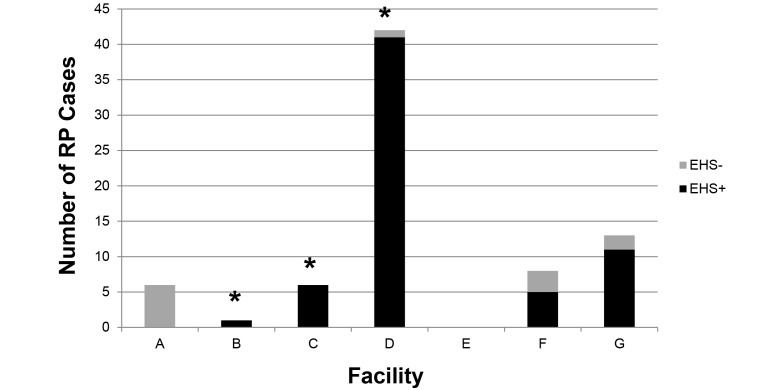Figure 4.
EHS infection status of RP mice by facility. Total number of RP cases from each facility are shown by EHS infection status. Of note, none of the mice with RP in facility A were EHS-positive; this finding is expected given that facility A is an SPF barrier for EHS. Mouse colonies of facility D were moved to a newly built vivarium in 2011, but the population of mice is the same. The majority of cases originated from facility D; this finding was not unexpected because this is the largest rodent facility on the MIT campus, it houses primarily immunodeficient or neoplasia-prone strains, and it is home to the Lpd–/– strain which appears to be uniquely susceptible to RP. In addition, many of the colonies kept in this facility predate the rederivation importation policy at MIT; thus EHS have been endemic in these colonies for at least 15 y. No RP cases were reported in facility E; this facility typically has a low prevalence of EHS and was negative in our 2009 surveillance. Facility G is a nearby research institute and not a part of the MIT campus. The majority of RP cases in the remaining facilities were EHS-positive; those that were EHS-negative were transgenic mice with deficiencies in innate immunity known to predispose the mice to intestinal inflammation. Asterisks indicate that this facility was known to be positive for at least one EHS species in our 2009 survey.

